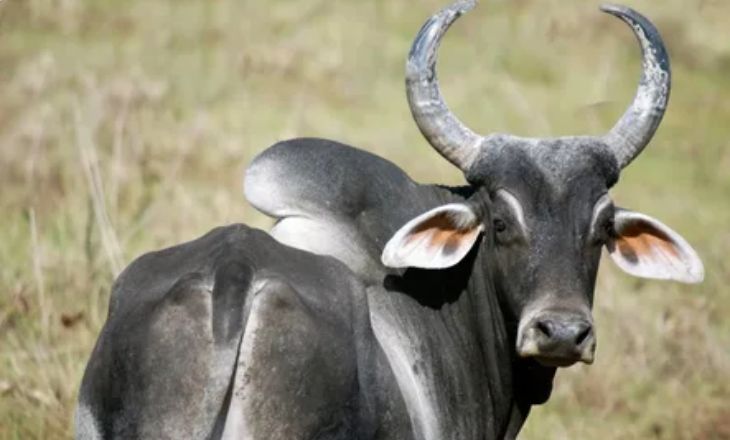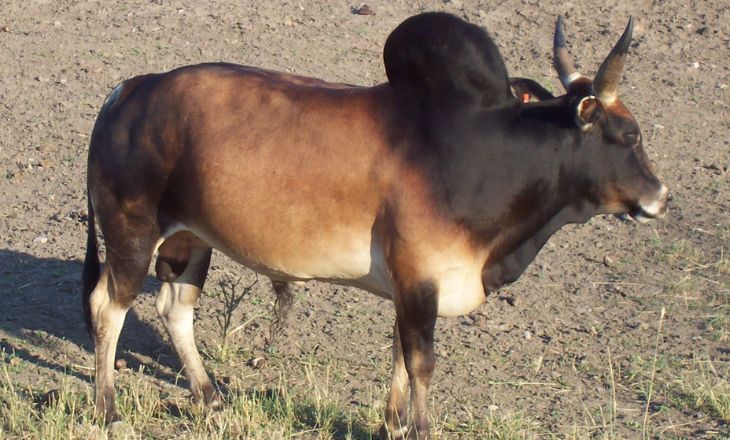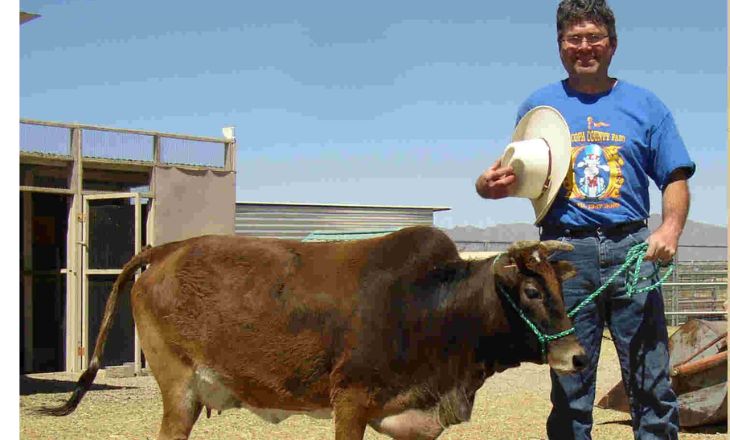Zebu cattle have humps and droopy ears and can live in different climates. They originated in South Asia and are now found worldwide.
These cattle are important in farming and food production because they thrive in hot weather and are resistant to illness. They demonstrate the collaboration between people and animals in agriculture.
What Is A Zebu
The Zebus is a type of cattle from South Asia and Africa. It has a hump on its shoulders and big droopy ears, which make it different from other cattle. Zebus do well in hot and humid places, which makes them good for tough environments.
Zebus are important for their milk and meat. They are also valued in farming and ceremonies in different cultures because they are important economically and culturally. Ancient civilizations have long used Zebus for farming, transportation, and religious purposes.
Symbol
There is a type of cattle with a hump and long horns that are significant in many cultures.
In Hindu stories, it symbolizes fertility and abundance and is considered a strong and tough animal. This symbolism extends beyond religion, highlighting the bond between people and nature.
In African stories, zebus represents power and wealth, bringing good luck. Artists have found inspiration in the appearance of zebus, creating paintings, sculptures, and stories about them. Whether portraying energy or beauty, they are cherished globally for their enduring significance that transcends cultures.

Physical Characteristics
Physical traits are not just about how someone looks; they can also have important cultural and social significance.
Size: They are smaller than regular cattle breeds. Adult males are usually about 1.2-1.4 meters tall at the shoulder.
Weight: 300-600 kilograms.
Color: Cattle come in many colors, from white and black to deep red. This shows how diverse their genes are.
Skin Type: Cattle have tough skin that helps them handle harsh weather and bugs, keeping them healthy in hot and humid places.
Lifespan: Zebus can live for over 20 years with proper care and food.
Speed: They are fast animals that can run up to 25 miles per hour, making them one of the quickest cattle breeds.

Sexual Reproduction
Female Zebus are most fertile when they are in heat. Male Zebus are attracted to females by smells and sounds. During mating, male Zebus tries to show dominance by mating with females. After mating, the female carries the baby for about 9 months before giving birth to a calf.
Understanding Zebus’ reproduction helps us learn about their social life and how they maintain their species. Each step, from courtship to having babies, shows how their behaviors help them survive and keep their species alive.
Behavior
They are social animals that like to be in groups. They form herds led by a dominant male. These herds have a clear hierarchy, with individuals showing their rank through aggressive or submissive actions. Zebus groom each other by licking to stay clean and strengthen bonds.
A Horns
In many cultures, the zebus’s horns, which are large and curved, symbolize strength and status. The horns also serve practical purposes, helping regulate body temperature by promoting air circulation.
Each horn has unique patterns and sizes, reflecting the zebu’s life experiences and genetics. Their horns are important in cultural traditions, symbolizing power, fertility, or divine connection.
Milk Production
Zebu cows produce milk rich in protein and fat with a unique taste. Health-conscious individuals prefer milk for its calcium and vitamins. Zebu cows are environmentally friendly and can thrive in harsh conditions without requiring many resources.
Zebu Facts
Habitat: Zebus live in grasslands, savannas, and open woodlands.
Location: They are common in many parts of Asia, such as Pakistan, India, Nepal, Bangladesh, and China. Taurine cattle are mostly found in northern Asia, like Japan, Korea, northern China, and Mongolia.
Diet: The stays healthy by eating different plants like grass and leaves. They have a special stomach to get nutrients and can survive in tough places by eating various plants.
Conservation status: Zebus from South Asia and Africa are in trouble. They are losing their homes to overgrazing, predators, and diseases, causing their numbers to drop quickly. Conservation groups and governments are trying to help by creating safe areas and breeding programs for Zebus.
scientific name: The scientific name is Bos taurus indicus, also known as Brahman cattle.
Do People Eat
People like meat because it is tender and tasty, and they often eat it at important events. In Malagasy culture, meat is important for rituals and has symbolic meaning. It is also valued for its good taste and benefits, such as protein, iron, and vitamins.
Raising and eating cattle affects food traditions and social practices in various regions.
Zebu Meat Quality
Various factors, such as age, diet, and genetics, can affect meat quality. Lean meat tends to have a unique flavor. It is important to consider these factors when raising meat production.
Meat Taste
Meat tastes are unique.
Miniature Zebu
Miniature Zebu, or mini cattle, are becoming popular because of their special traits. These small cows come from India and are valued for their small size and calm behavior. They are tough animals that can adjust to different weather despite being tiny.
One interesting thing about them is the hump on their back, which is different from other cows. This hump stores fat and has developed over time to help them survive in tough conditions.
Miniature comes in different colors and patterns, making them visually appealing. Owners love their intelligence and friendly nature. They are great companions for hobby farmers or anyone wanting unique livestock. With good care, Miniature Zebus can thrive and bring happiness to their owners.

Australian Milking Zebu
The Australian Milking Zebu is a special dairy cow that can handle Australia’s different weather and rough land. They have hump and floppy ears and are good at making high-quality milk even in tough conditions. Despite being smaller than other dairy cows, they are becoming more popular among farmers who want to work efficiently and sustainably.
One cool thing about them is that they naturally resist common cow sickness, so they don’t need as many antibiotics or vet visits. This makes them great for organic farming and better animal care. Their milk tastes good, so cheese makers and special dairy producers like using it.
The Australian Milking is a good choice for the dairy industry because it balances productivity with environmental care. As more farmers learn about the benefits of this tough breed, we’ll probably see more sustainable farming focusing on animal health and product quality.
Meat Sale
Try meat for a tasty addition to your cooking. Look for trusted sellers prioritizing animal welfare and sustainable farming for high-quality meat. You can enjoy delicious meals guilt-free and support responsible farming by choosing ethically raised meat.
Whether grilling steaks or adding the meat to stews and curries, trying this exotic protein can enhance your cooking.
Conclusion
Zebu are interesting animals that have been important to many communities for a long time. They are tough and can live in different places. It is important to understand their cultural value and how they help with farming and local money. We should protect Zebus and its populations by saving them and using good practices.
Let’s join forces to keep these amazing animals safe, honor their history, and help our world.
Frequently Asked Question
How Many Stomachs Does A Zebu Cow Have?
This cow has four stomach compartments.
What Is The Age Of A Cow?
Cows typically live to be around 15-20 years old.

